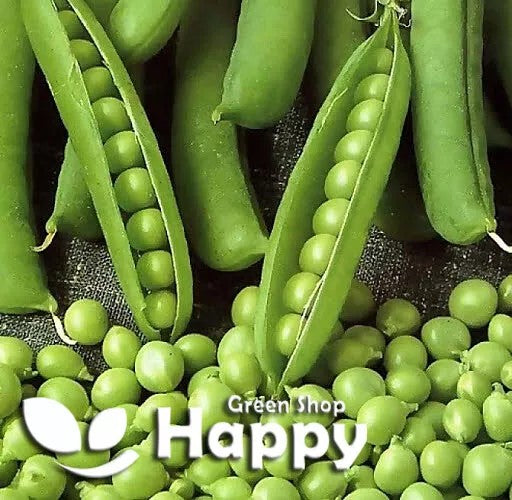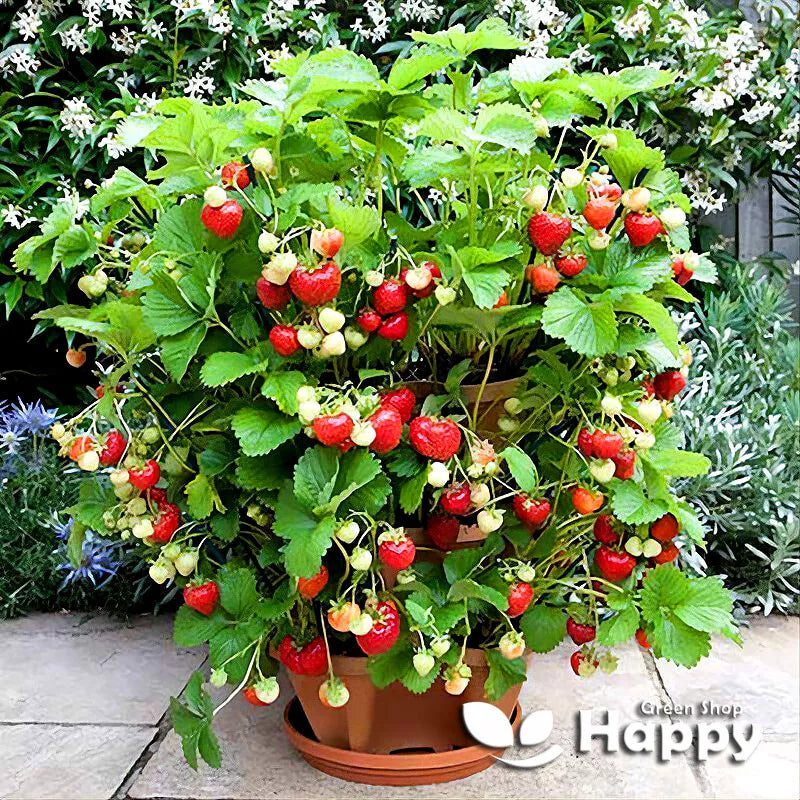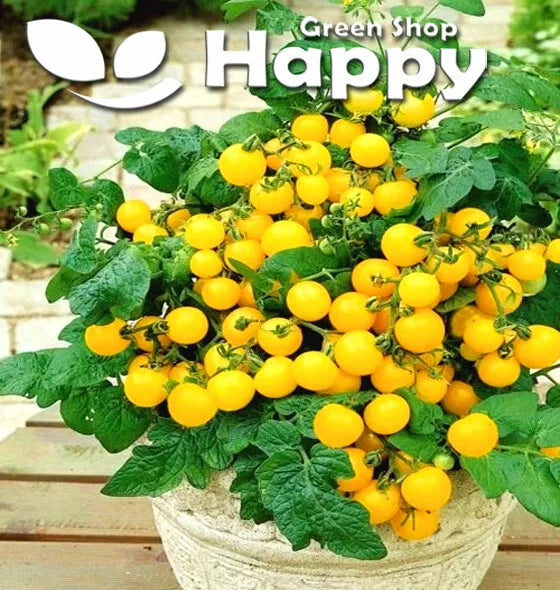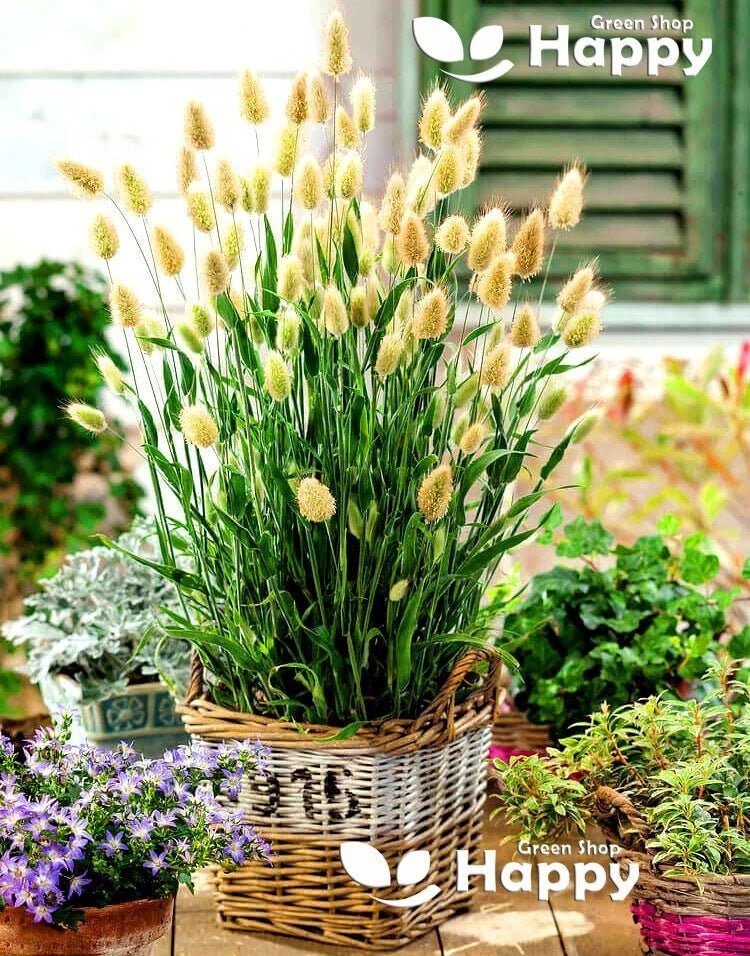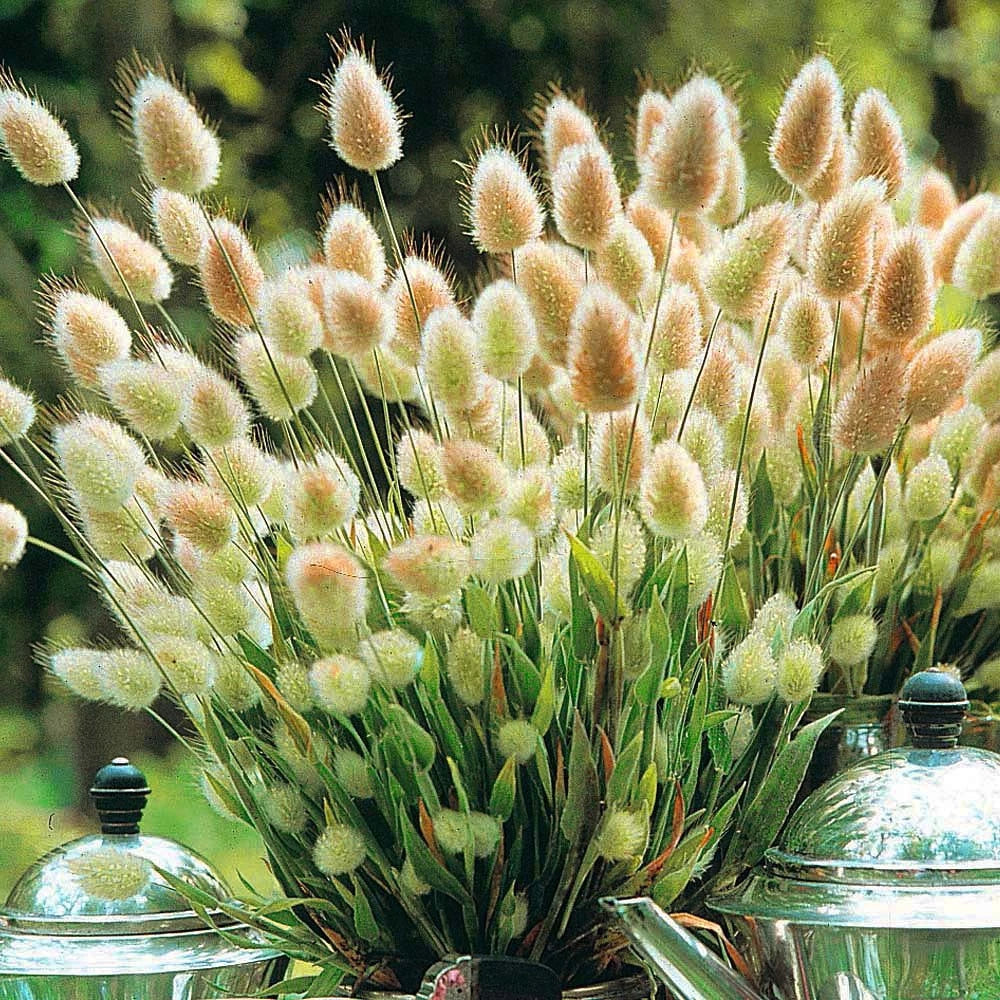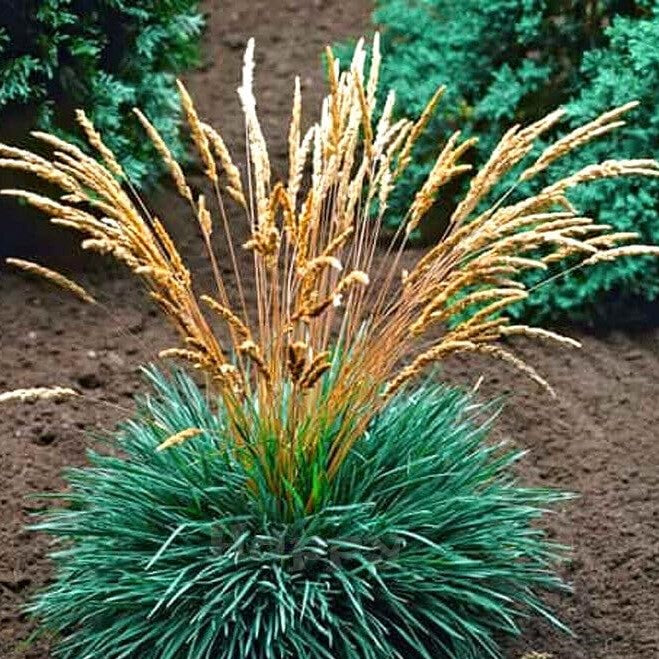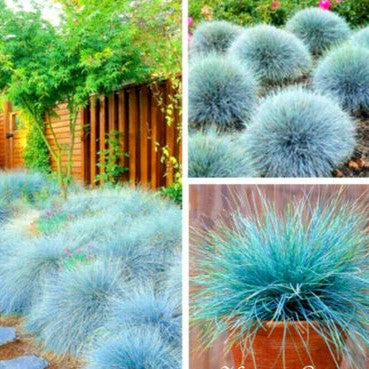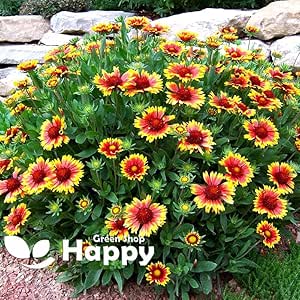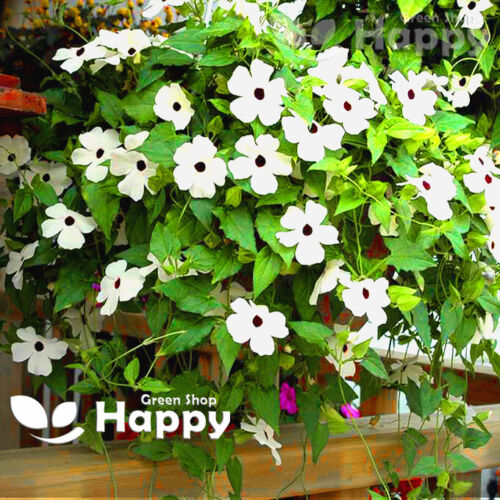Sort by:
435 products
435 products
Bush Yellow Tomato ‘Aztek’ – Seeds
(Solanum lycopersicum) – Compact Dwarf Cherry Tomato
‘Aztek’ is a miniature bush tomato variety that produces an abundance of bright yellow cherry-sized fruits with a mild, sweet taste. Perfect for small spaces, balconies, patios, and containers, this compact plant grows only 25–40 cm tall and does not require pruning or staking. Despite its small size, it delivers excellent yields of juicy fruits, ideal for snacking and salads.
Key Features
-
Type: Dwarf bush cherry tomato (determinate)
-
Plant height: 25–40 cm
-
Fruit size: ~15–20 g, cherry-sized
-
Color: Golden yellow
-
Taste: Sweet, mild, fruity
-
Harvest: Early – from June/July
-
Growth habit: Compact, no staking required
Ideal For
-
Containers, pots, and balconies
-
Small gardens and urban growing
-
Early harvests & continuous snacking
-
Children’s gardens – easy and fun to grow
Sowing & Growing
-
Sow indoors: February–April, 0.5 cm deep in pots or trays.
-
Germination: 7–14 days at 20–25°C.
-
Transplant: After last frost, spacing 30–40 cm apart or one per container.
-
Support: Not required (self-supporting bush type).
-
Harvest: From ~60–70 days after transplanting.
Care Tips
-
Ideal for pots (minimum 3–5 L).
-
Feed regularly with tomato fertilizer once flowering begins.
-
Water consistently – avoid drying out.
Burning Bush – Seeds (Kochia trichophylla)
Create a dazzling garden display with the Burning Bush, a striking ornamental foliage plant. Starting as soft green mounds in summer, the plants transform into fiery shades of crimson and scarlet in autumn, giving the effect of glowing flames. Its uniform, bushy habit makes it perfect for edging, bedding, or mass plantings.
What Makes It Special
-
Unique seasonal color transformation: green to brilliant red
-
Neat, globe-shaped plants with fine feathery foliage
-
Low maintenance and fast growing
Key Features
-
Height: 50–90 cm
-
Annual, easy to grow
-
Provides brilliant late-season color
-
Excellent for borders, hedging, and ornamental accents
Ideal For
-
Bedding displays and edging
-
Focal points in mixed borders
-
Striking mass plantings or container gardening
Sowing
-
Sow outdoors directly in April–May after frost risk has passed
-
Scatter thinly and cover lightly with soil
-
Germination: 7–14 days at 18–22°C
-
Thin seedlings to 30–40 cm apart for strong bushy growth
Bunny’s Tail Grass Seeds (Lagurus ovatus)
Bunny’s Tail Grass is a delightful ornamental grass grown for its soft, fluffy seed heads that resemble little rabbit tails. Compact and charming, this annual grass produces tufted, silky panicles that turn from pale green to creamy white as they mature. It is excellent for borders, containers, wildlife gardens, and makes a superb addition to dried flower arrangements. Easy to grow and highly versatile, it adds both movement and texture to summer displays.
What Makes It Special
-
Unique fluffy “bunny tail” seed heads
-
Excellent for fresh or dried flower arrangements
-
Compact and suitable for pots or borders
-
Loved for adding texture to floral displays and garden edges
Key Features
-
Botanical name: Lagurus ovatus
-
Common name: Bunny’s Tail Grass / Hare’s-tail Grass
-
Seed count: Approx. seeds per pack
-
Height/Spread: 30–45 cm tall, 20–30 cm spread
-
Position: Full sun; well-drained soil
-
Flowering period: June–September
Ideal For
-
Borders and edging
-
Patio containers
-
Dried flower arrangements
-
Wildlife-friendly gardens
-
Coastal and low-maintenance planting
Sowing Instructions
-
When to sow: March–May indoors or direct sow outdoors in April–June
-
How to sow:
-
Sow thinly on the surface of well-drained seed compost or prepared soil
-
Lightly cover with fine soil or vermiculite
-
Keep moist until germination (10–20 days)
-
-
Transplant/Thin: Space plants 20–25 cm apart
-
Care: Minimal care needed; drought-tolerant once established. Cut seed heads for drying when fluffy.
Blue Petunia Star F1 Prio – 50 Seeds (Petunia multiflora)
Description:
Create a stunning display of vibrant blue in your garden with Blue Petunia Star F1 Prio (Petunia multiflora). This vigorous F1 hybrid produces star-shaped, bright blue flowers on compact, well-branched plants. Perfect for hanging baskets, containers, and garden borders, it blooms continuously from spring through autumn, offering long-lasting color with minimal care. Ideal for gardeners seeking high-performance, eye-catching blooms.
Key Features
-
Star-shaped, vibrant blue flowers
-
Compact and well-branched growth habit
-
Continuous flowering from spring to autumn
-
Perfect for baskets, containers, and borders
-
Easy to grow and low maintenance
Ideal For
-
Hanging baskets and window boxes
-
Patio containers and balcony planters
-
Garden borders and bedding displays
-
Long-lasting seasonal color
Sowing & Growing
-
Sow Indoors: February–April
-
Transplant Outdoors: May, after frost
-
Germination: 10–14 days at 20–24°C
-
Plant Spacing: 25–30 cm apart
-
Height: 20–25 cm
-
Light: Full sun
-
Soil: Fertile, well-drained
Care Tips
-
Deadhead regularly to encourage continuous blooming
-
Water evenly; avoid overwatering
-
Fertilize every 2–3 weeks with a balanced liquid fertilizer
-
Pinch young plants to encourage bushy growth
Blue Hair Grass – 300 Seeds (Koeleria glauca)
Add elegant texture and cool-toned color to your garden with Blue Hair Grass (Koeleria glauca). This compact, ornamental grass forms neat clumps of fine, silvery-blue foliage, topped with delicate seed heads in early summer. Its striking appearance makes it ideal for rock gardens, borders, containers, or as a soft contrast among colorful flowers. Hardy and drought-tolerant, it’s a reliable choice for low-maintenance landscapes.
Why Grow Blue Hair Grass?
-
Attractive silvery-blue foliage year-round
-
Airy seed heads add movement and lightness
-
Compact and low-growing, perfect for edging or containers
-
Tolerant of poor, sandy, or dry soils
-
Low-maintenance and hardy perennial
Key Features
-
Type: Perennial ornamental grass
-
Height: 30–40 cm
-
Spread: 25–30 cm
-
Position: Full sun; well-drained soil
-
Uses: Rock gardens, borders, containers, ground cover, naturalistic plantings
Ideal For
-
Adding texture and color contrast to mixed plantings
-
Drought-tolerant, low-care gardens
-
Coastal and gravel gardens
-
Stylish modern landscaping
Sowing & Growing
-
Sow indoors: February–April in trays of moist compost, lightly covering the seed
-
Germination: 14–28 days at 18–22°C
-
Transplant seedlings when large enough to handle
-
Plant out after frost, spacing 25 cm apart
-
Flowers and produces seed heads in early summer
Blue Fescue Grass Seeds (Festuca glauca)
Blue Fescue is a compact, clump-forming ornamental grass prized for its striking silvery-blue foliage and neat rounded habit. It provides year-round interest and a beautiful contrast to flowering plants, rock gardens, or modern landscapes. Easy to grow and low-maintenance, this grass is a top choice for adding texture and color to gardens.
What Makes It Special
-
Stunning steel-blue foliage that keeps its color year-round
-
Compact, tufted shape – perfect for edging or groundcover
-
Extremely hardy and drought-tolerant once established
-
Low-maintenance and versatile in garden design
Key Features
-
Botanical name: Festuca glauca
-
Common name: Blue Fescue
-
Seed count: Approx. seeds per pack
-
Height/Spread: 20–30 cm tall, 25–30 cm spread
-
Position: Full sun; well-drained soil (thrives in poor, dry soils)
-
Flowering period: Summer (produces delicate flower spikes)
-
Lifespan: Hardy perennial
Ideal For
-
Rock gardens and alpine displays
-
Borders and edging along paths
-
Containers and modern minimalist gardens
-
Drought-tolerant or low-maintenance landscapes
-
Adding color contrast to mixed plantings
Sowing Instructions
-
When to sow: February–April indoors or May–June outdoors
-
How to sow:
-
Sow thinly on the surface of moist, well-draining compost
-
Press seeds lightly into the soil, do not cover deeply (light aids germination)
-
Keep at 15–20°C; germination in 14–28 days
-
-
Transplant: When seedlings are large enough, prick out and grow in pots before planting out
-
Planting out: Choose a sunny spot with free-draining soil; avoid overly wet conditions
-
Care: Minimal maintenance required. Cut back old leaves in early spring to encourage fresh growth.
Black-eyed Susan Mix – Seeds
(Thunbergia alata)
Black-eyed Susan Vine (Thunbergia alata) is a fast-growing climber with masses of cheerful, brightly colored blooms in shades of yellow, orange, and cream, each with a characteristic dark center. Perfect for adding a splash of long-lasting color, this mix thrives on trellises, fences, or hanging baskets, creating a vibrant display all summer long.
Why Grow Black-eyed Susan Mix?
-
Free-flowering climber with vivid blooms
-
Long season of color from summer to frost
-
Easy to grow and fast covering
-
Great for both vertical and container gardening
Key Features
-
Type: Annual climber
-
Height: 150–200 cm
-
Flowers: Summer to autumn
-
Position: Full sun or light shade
-
Soil: Fertile, well-drained
Ideal For
-
Covering fences, trellises, and arches
-
Hanging baskets and balcony displays
-
Fast seasonal screening
-
Bright summer color in any garden
Sowing & Growing
-
Sow indoors: February–April in pots/trays at 18–22°C
-
Germination: 14–21 days
-
Transplant: Harden off and plant outside after last frost
-
Outdoor sowing: Late spring in warm soil, directly where plants will climb
-
Support: Provide trellis, netting, or string for climbing habit
Blanket Flower Mix Seeds (Gaillardia aristata)
A vibrant and hardy perennial, Blanket Flower Mix produces daisy-like blooms in shades of red, orange, and yellow with contrasting centers. Long-flowering and drought-tolerant, these plants are perfect for borders, wildflower gardens, and containers, attracting bees and butterflies throughout summer.
What Makes It Special
-
Bright, daisy-like flowers in red, orange, and yellow tones
-
Drought-tolerant, hardy, and long-flowering
-
Attracts pollinators, enhancing wildlife-friendly gardens
Key Features
-
Botanical name: Gaillardia aristata
-
Hardy perennial
-
Height: 30–60 cm (12–24 in)
-
Bloom time: Summer to early autumn
Ideal For
-
Borders, beds, and wildflower gardens
-
Containers, pots, and window boxes
-
Pollinator-friendly plantings
Sowing
-
Sow indoors Feb–Apr or outdoors Mar–May
-
Cover lightly with soil and keep moist
-
Germination: 10–21 days at 15–20°C
-
Thin seedlings 25–30 cm apart
-
Flowers the first or second season after sowing
Black-Eyed Susan White Seeds (Thunbergia alata)
Black-Eyed Susan White is a vigorous, climbing annual producing striking white flowers with contrasting dark centers. Its trailing and twining habit makes it perfect for trellises, fences, arbors, and containers. Loved for its long flowering season and fast growth, it adds vertical interest and bright, cheerful color to any garden.
What Makes It Special
-
Bright white flowers with contrasting dark centers
-
Vigorous climbing and trailing growth ideal for vertical displays
-
Long-flowering, providing summer and autumn color
-
Attracts pollinators such as bees and butterflies
Key Features
-
Botanical name: Thunbergia alata
-
Variety: White
-
Seed count: Approx. seeds per pack
-
Height/Spread: Climbs 1.5–2.5 m; spread depends on support
-
Position: Full sun to partial shade; fertile, well-drained soil
-
Flowering period: June–October
Ideal For
-
Trellises, fences, arches, and arbors
-
Hanging baskets and containers with support
-
Vertical interest in garden beds and borders
-
Pollinator-friendly gardens
Sowing Instructions
-
When to sow: February–April indoors; March–May outdoors
-
How to sow:
-
Sow seeds 0.5–1 cm deep in pots or seed trays
-
Germination in 10–14 days at 20–25°C
-
-
Transplanting: Plant outdoors after frost, spacing 25–30 cm apart with support
-
Care: Water regularly; provide trellis or support for climbing; deadhead to prolong flowering
Showing 396/435

